If you can't imagine travelling in Japan without access to the internet, and you want to know if a Ninja pocket WiFi router is the best way for you to stay connected in Japan, then read on...
Ninja Pocket WiFi Highlights / 7 Reasons To Rent:
Review: Ninja Pocket WiFi
by Rob Dyer
What is a 'Pocket' WiFi router?
A rental service for people coming to Japan for WiFi routers to connect to the internet. These can be used anywhere around Japan, often on a fixed daily rate basis.
The name comes from the fact that these routers are small and pocketable.
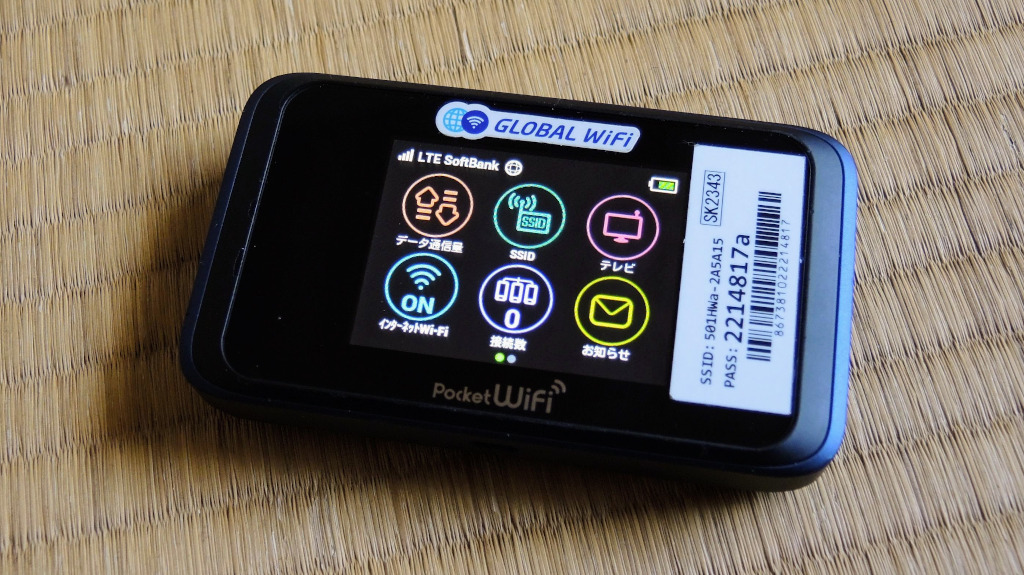
They only give you access to the internet so cannot help with regular phone calls - unless those calls are made over the internet using a messaging service or similar dedicated apps. I typically use a WiFi router to make calls via Skype and LINE.
Pocket WiFi isn't the only way to get connected to the internet while in Japan. Other popular options are buying a Japan SIM card that you insert into your phone instead of carrying a portable WiFi. Or, if you have a more recent device, using an eSIM - which is sent to you via email within minutes of purchasing.
SEE ALSO: Mobal SIM Card Review: The Best Unlimited SIM In Japan?
Major benefit - connecting multiple devices
A major benefit of pocket WiFi routers is the ability to connect multiple devices all at the same time to a single router. This enables couples, friends and families travelling together to all use a single router at the same time.
With Ninja pocket WiFi routers, it is possible to connect up to 10 devices at the same time.
And it isn't just smartphones that can connect. Pretty much most devices that use a WiFi connection, including phones, laptops, tablets and games consoles can all connect using a pocket WiFi router.
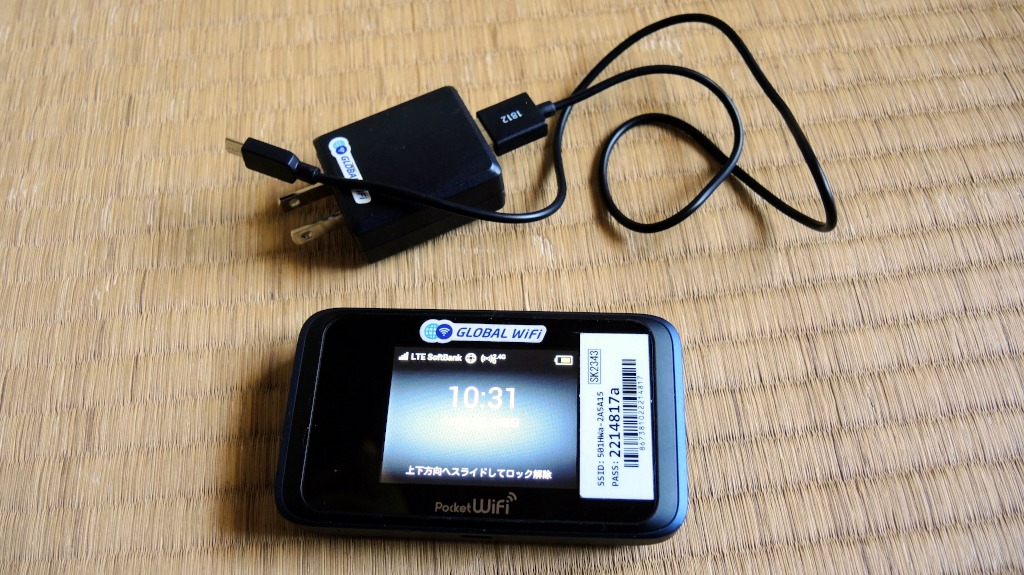
I usually travel with my wife and we often have two phones and two laptops simultaneously connected via a single router. Having said that, we always rent two routers so that we each have connectivity independently of each other.
Meaning if we are off doing our own things, or even if we are out together but temporarily separated, for example browsing in a large, multi-floored store, we can always keep in touch.
Why Ninja Pocket WiFi?
Ninja WiFi is one of the leading players in the WiFi rental sector in Japan. They have over 14 million customers worldwide. Their service uses the Softbank network - one of Japan's largest. The network is extensive, even working on small, remote islands.
They have English-speaking staff and customer support and their routers can be ordered in advance and either be collected from one of their service desks at major airports, or can be delivered to your accommodation.
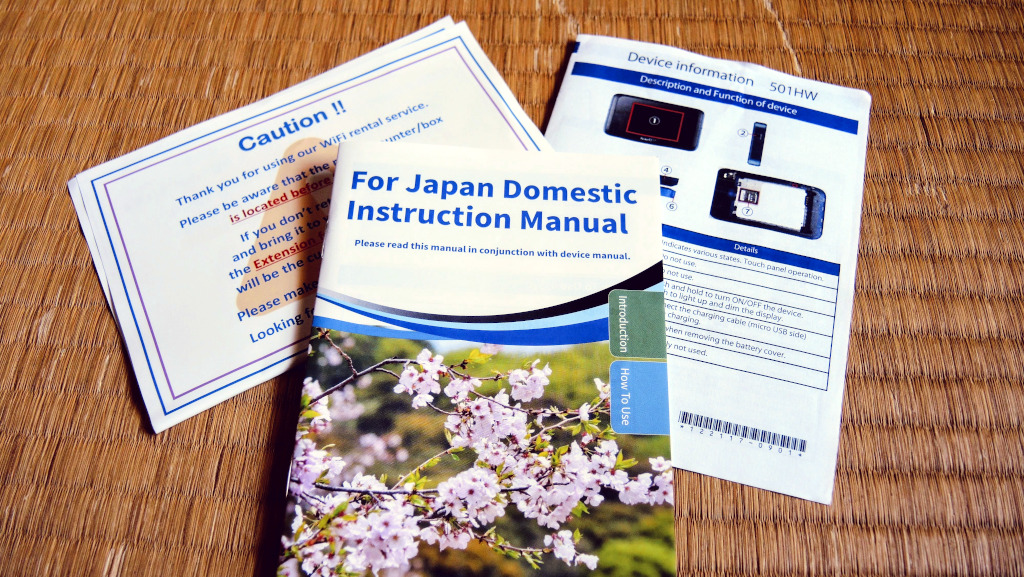
It is a subsidiary of a Japanese company called Vision Inc., that has a number of service brands in the telecommunications sector. One of those, Global WiFi is a rental service for WiFi routers that can be used in more than 200 countries and regions around the world.
Ninja Pocket WiFi is a WiFi router rental service specifically for people coming to Japan. Sometimes you may see the logo for sister company Global WiFi on Ninja WiFi products.
That's nothing to be concerned about. You'll be getting the Ninja WiFi service if buying through the Ninja WiFi brand.
Free replacement service
They offer a free replacement service should your router malfunction for any reason. They will post your replacement to where you are staying free of charge and provide you with a pre-paid envelope to return the faulty router.
Can't I just use free WiFi in Japan?
You can, but honestly it isn't a great experience.
Many first-time visitors to Japan are surprised to find that free, or at least even just easy-access WiFi is still far from universal in Japan.
Public internet access used to be terrible but has improved in recent years (and continues to do so). Free WiFi is generally available in all major cities - albeit often in ‘patches’ rather than blanket, city-wide coverage.
You’ll also often need to register to use it and, when you do, the performance can be slow and unreliable and is usually very time-limited. Then there's the big question of is it even safe to use free WiFi in Japan (or in any country for that matter)? The short answer is no, it isn't.
All of which can still be at least frustrating, or more likely a real pain. Unless you rarely need to connect to the internet, it's still not a viable practical option.
SEE ALSO: Is it Safe To Use Free WiFi in Japan? 5 Risks and How to Avoid Them
Your Ninja Pocket WiFi - what's included?
Your WiFi router comes in a zip-up pouch, which contains 4 items:
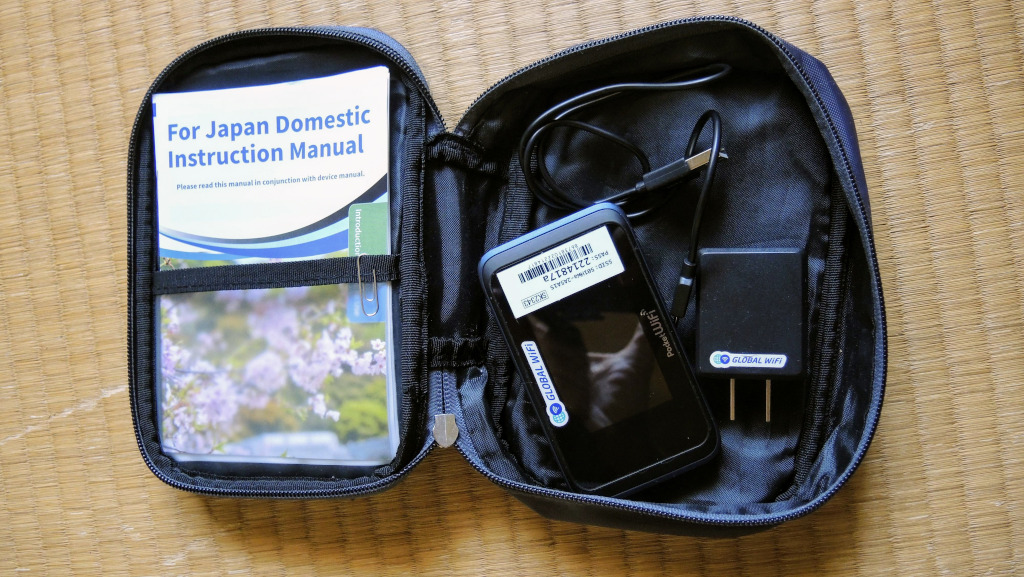
Tucked into the outside of the wallet, you'll get some basic information about returning the router after your rental period. There's also details on the airport that have service desk, and where those service desks are located.
VIDEO: Ninja Pocket WiFi Router Guide & Walk-Through
Unlimited router plan
Ninja WiFi offers one Unlimited Data Plan.
The following table sets out the details of the plan.
FEATURE | DETAILS |
|---|---|
Router Design | 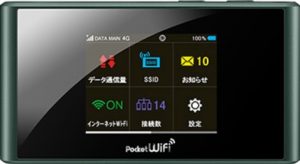 |
Data Limit | Unlimited* |
Download Speed | Up to 187.5 Mbps 4G LTE |
Upload Speed | Up to 37.5Mbps 4G LTE |
Dimensions | About 117(W) x 62(H) x 13.9(D) mm |
Device Connection Limit | Up to 5 devices at the same time |
* Exceeding 3GB in a day can result in a loss of speed and possibly a temporary loss of connection.
I recommend ordering via the JRPass website (where you can also buy your Japan Rail Pass).
How to use
The instruction manual has lots of detail on all aspects of using the pocket WiFi. Including information for iPhone/iPad and Android phone and Windows and Mac users. I recommend reading through it to ensure you know exactly how to use the service.
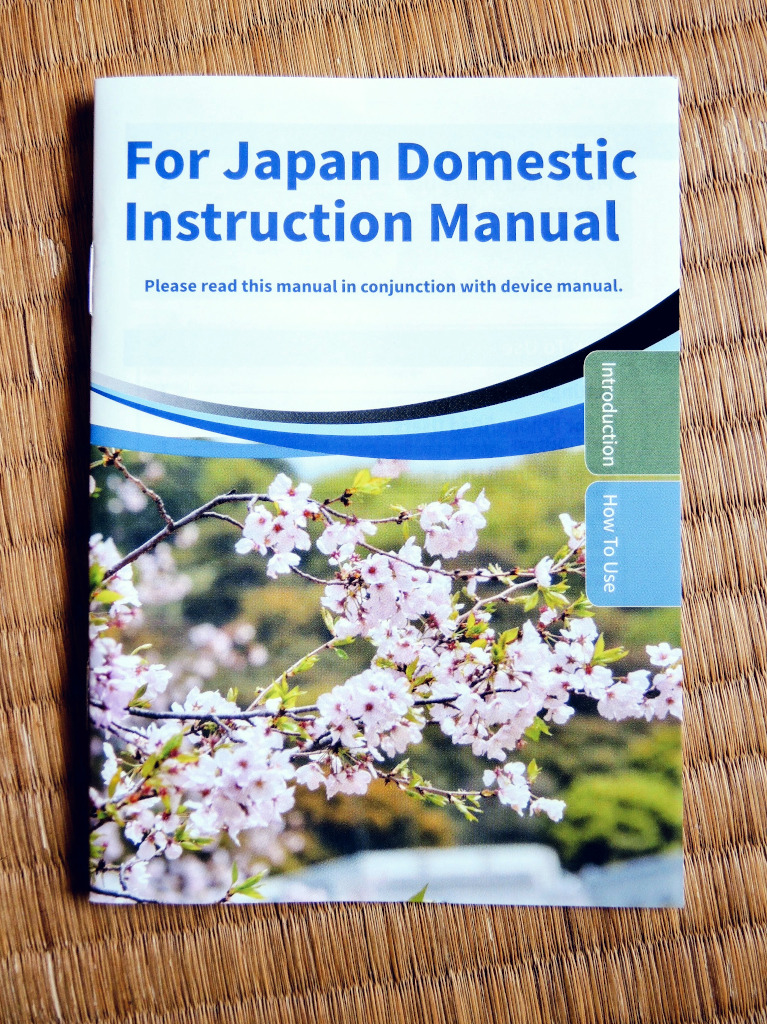
To use a router, simply switch it on and it will automatically connect to the Softbank network. Where the faster 4G LTE network is available the router will automatically connect to it. If LTE isn't available, it will connect to the standard 4G network. If neither 4G LTE or 4G signal is available then it will connect to 3G.
Switch on whichever device (phone, laptop, tablet, games console) you want to connect to the internet and it will detect the router's signal. Each router has a unique SSID number and connection password. These are printed on each router.
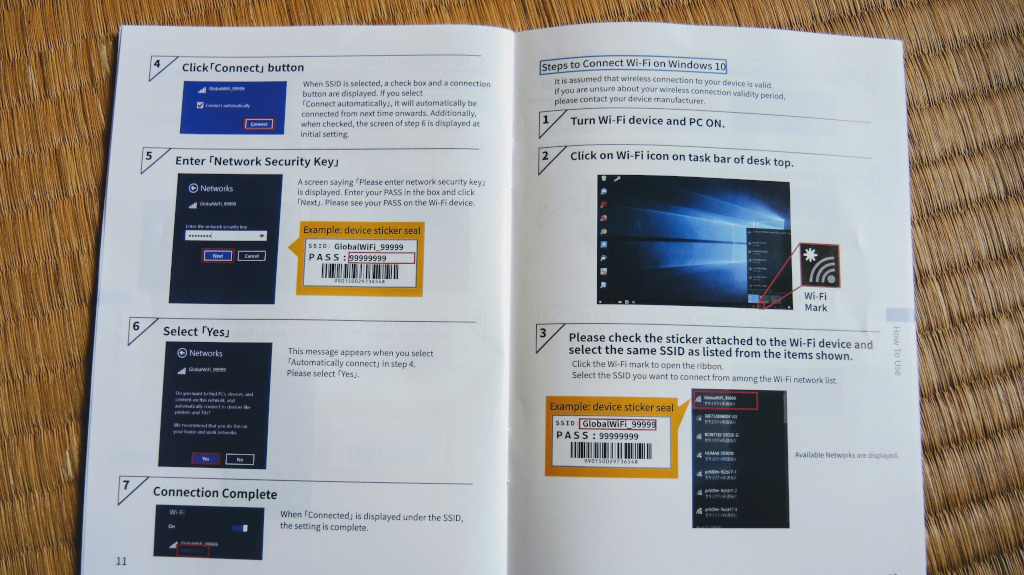
The manual includes easy to follow, step by step instructions
Choose the SSID for your router on your device and enter the password on the router to connect your device to the pocket WiFi.
Charging the router takes between 4 - 6 hours and will vary depending on if you are charging via the mains or via a power bank battery.
The Unlimited plan provides up to 12 hours of continuous internet usage, and allows up to 5 devices to connect to the internet at the same time.
How to order Ninja WiFi
It's simple. There's 3 steps to ordering and using the service:
Ordering is simple
Order online
Registrations by application form accepted up to 4 days prior to your desired pickup date.
Payments processed by credit card.
Pick-up at airport or hotel delivery
Decide upon the duration of your rental. It can be anything from 5 - 45 days.
Pickup your Wi-Fi at a number of airports across Japan. Option for hotel delivery for a small fee.
Select pickup date and arrival airport.
Returning the router
Simply return your routers at the service counter at your departure airport.
All major airports covered including Narita Airport, Haneda, Kansai, New Chitose, Komatsu, Nagoya Chubu airport, and Fukuoka.
Select the departure airport to return the Wifi router when placing your order.
Ordering via Ninja WiFi or JRPass
I recommend ordering your Ninja pocket WiFi via the JRPass.com website. Their website is quick and easy to navigate and they are an officially authorised agent. They also offer an excellent JR Pass booking service. If you buy your Japan Rail Pass through them (and I recommend you do), you can add Ninja WiFi rental to your order at the same time.
If you prefer, you can order directly via the Ninja WiFi website HERE.
Pick-up and delivery
The WiFi can be picked up and returned at all major airports within Japan, including Narita Airport, Haneda, Kansai, New Chitose, Komatsu, Nagoya Chubu airport, Fukuoka and Naha (Okinawa). Be sure to select the airports where you wish to pick-up and return the Wifi router when you place your Ninja WiFi order with JRPass.com.
If preferred, you also have the option to have the WiFi delivered to the first hotel you are staying at. You'll need to confirm the hotel name and address when making your booking. Your mobile WiFi will be delivered to the reception.
Note: There is a small additional cost of postage if using delivery by post.
Participating airports
Ninja WiFi has nine counters at several major airports in Japan. You can pick up your WiFi router at a counter upon your arrival, and return it when you leave Japan.
Hokkaido
Honshu
Kyushu
Okinawa
Business hours for pick-up: 6:30am - final arrival flight. Business hours for return: 7:00am-9:00pm. Slightly oddly, whilst there is no pick up counter at Kagoshima Airport, it is possible to drop off/return routers in the International Terminal building there.
If you arrive at or leave Japan from an airport not in this list, then you should choose hotel delivery or another option for pick-up/return.
Returning your WiFi
Obviously, you should make sure you put all the items included back in the pack before you return it. If there is anything missing from the pack when you return it you maybe charged the overdue fee.
Be sure to include the instruction manual and other documentation in the return.
It's also crucial you return the pack before you pass through the departure gate at the airport.
It is possible to return your pack by dropping it off at a convenience store. In which case, Ninja WiFi provides a very handy pre-printed message, written in Japanese, in their pack that you simply show to the counter staff so they know what you are asking and what to do with the package.
The instruction manual that comes with every router includes detailed location maps and contact details for the major airports that have a Ninja WiFi service counter.
Note: There is an additional cost of postage if using return by post.
Do not make this mistake
After you have passed through the luggage and custom check, you are not allowed to go back to the lobby, where the Ninja WiFi service counter is located.
It sometimes happens that people go through to the departure gate only to then realize they forgot to return the router first.
If this does happen you are advised to contact the Customer Support Centre immediately if you entered the departure gate with the WiFi rental pack and router.
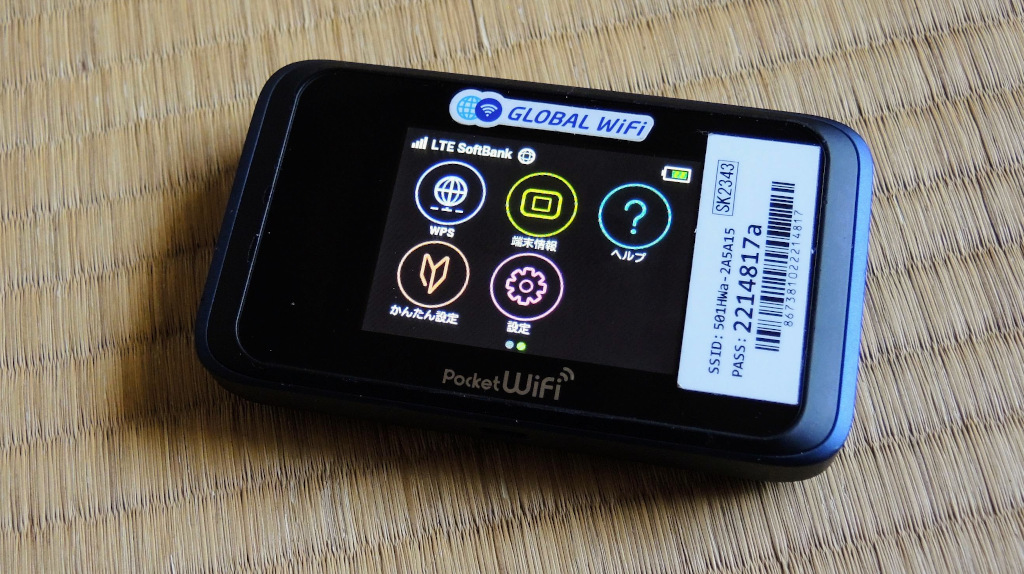
You'll most likely have to post it back at your own expense. That will include both the overdue fee and the cost of the return postage from your home country. So do all you can to avoid making this mistake!
How to Travel in Japan Without Speaking Japanese
UPDATED SECOND EDITION!
One of the major considerations with travelling in Japan is the inscrutable Japanese language.
A seemingly incomprehensible, often kaleidoscopic, barrage of cryptic symbols awaits the foreign traveller who doesn’t speak or read the language.
I’ve been exploring Japan since 2000 and I’ve picked up plenty of tips along the way.
I’ve distilled decades of my experience into this ebook for you.
This practical Guide and Travel Planner covers all the essential basics you need to ensure your first (or next) trip to Japan is as amazing as you deserve it to be.
My Ninja WiFi experience
I've used Ninja-WiFi multiple times down the years whilst travelling throughout Japan. Their service is rock solid and reliable.
Up to 5 people can connect at once to each router. Keep in mind that the maximum speed is divided by each user connected. This becomes noticeable if more than 4 people connect at the same time.
This is really handy when travelling with a partner, with family or for business.
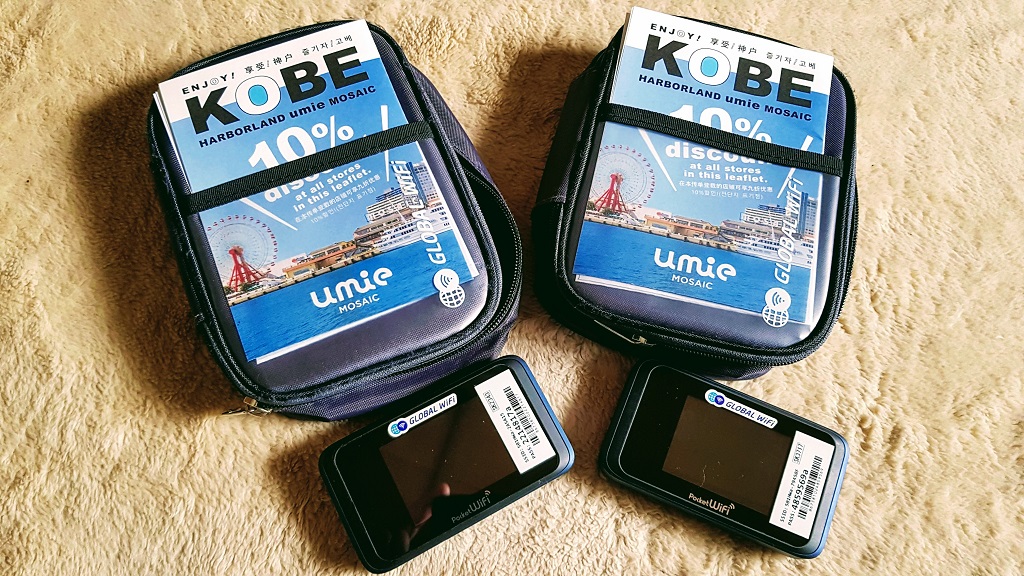
When my wife and I are travelling together we always rent 2 pocket WiFi. This means we can each have one so on the days we are apart we can both have constant access to the internet and to each other.
And the ability to have up to 5 devices connected means my wife and I can comfortably use a single router to connect our phones and laptops - at the same time.
Conclusion
I don't really know what else to say about them. They're just rock-solid. They always work. Very rarely do I have any connection problems.
The only thing you might spot at times is sometimes the settings on the routers are such that if you haven't connected to it for a while then it kind of goes into a sort of 'sleep mode' and you temporarily drop connection with your device.
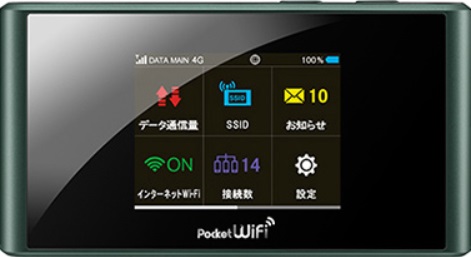
Ninja WiFi's Unlimited plan router
It doesn't switch off and the signal is still there, but your phone might drop the router connection. In which case all I tend to do is just give the router a quick shake, or just tap the screen, to get it back in service and suddenly your devices will find it again and reconnect.
So that's the Ninja Pocket WiFi router. Basically I can completely recommend them. I simply cannot travel in Japan without a WiFi router, so I recommend renting them.
They're great value.

About the Author
A writer and publisher from England, Rob has been exploring Japan’s islands since 2000. He specialises in travelling off the beaten track, whether on remote atolls or in the hidden streets of major cities. He’s the founder of TheRealJapan.com.
Resources
Order Ninja WiFi via the JRPass website
Get your Ninja Pocket WiFi at JRPass HERE
Ninja WiFi Website
Further Reading
Is it Safe To Use Free WiFi in Japan? 5 Risks and How to Avoid Them
Mobal SIM Card Review: The Best Unlimited SIM In Japan?
If you enjoyed this article please share this image online:

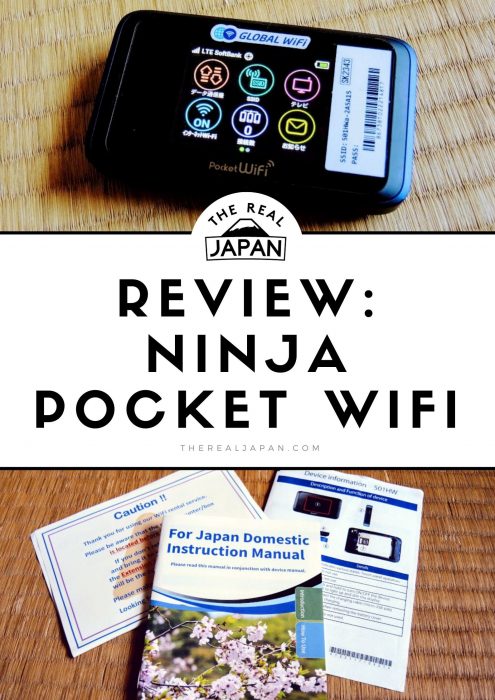

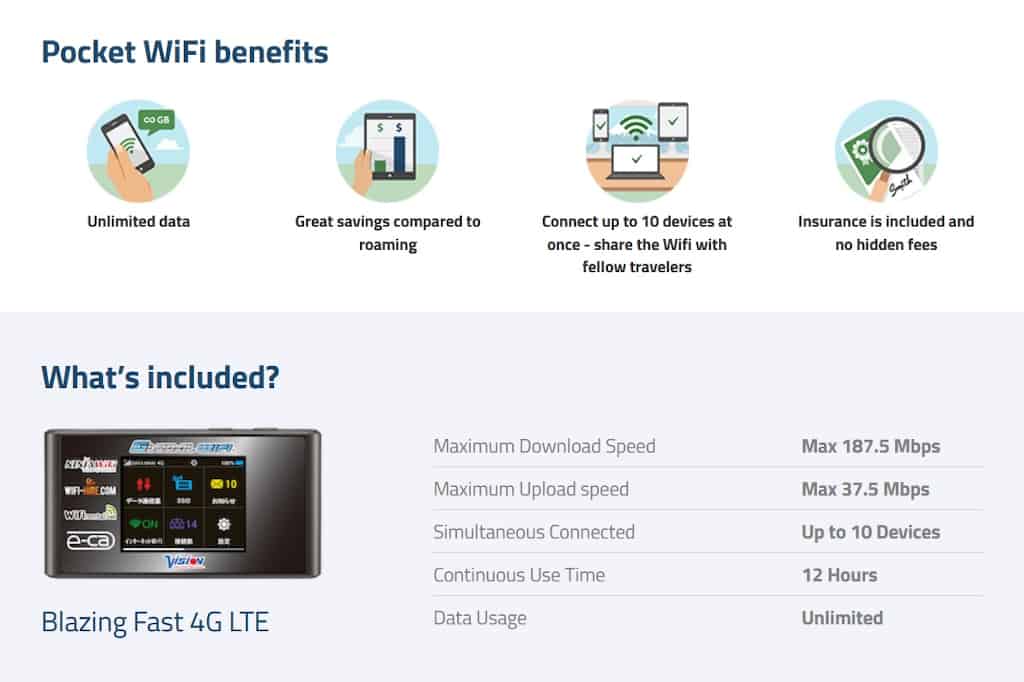
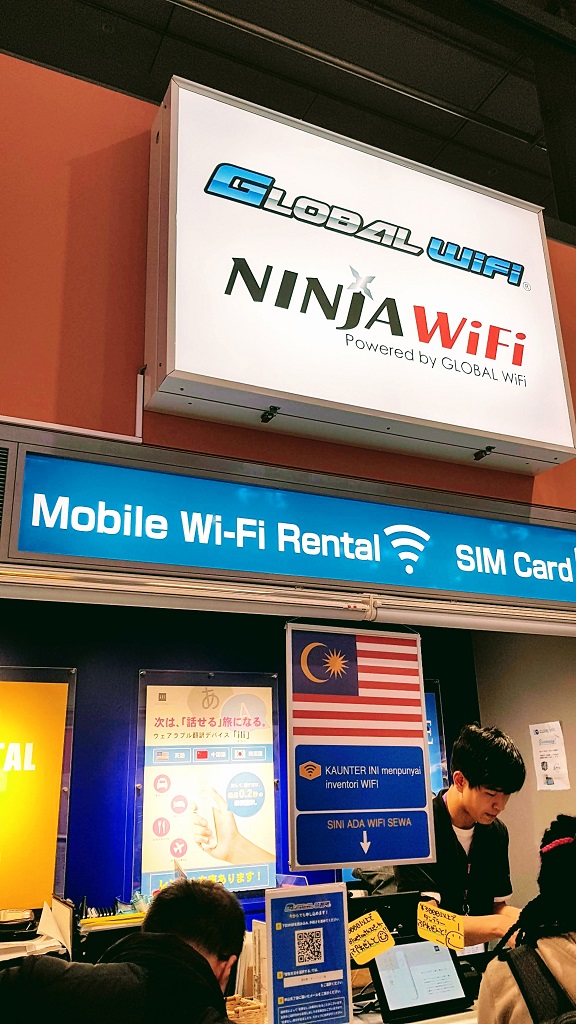
Can you book it for Sunday, but pick it up Monday? I’m unsure of when I will be landing, and wasn’t sure if they charged a late pick up fee.
Thanks for the question Valerie – when you make your booking you must specify the pickup date – and that’s when it will be ready for collection. I have heard of people arriving late due to flight delays and their WiFi is still waiting for them, but if you can hold off making your booking until your flight arrival is confirmed – that would be better. The support team (support@jrpass.com) can make changes to bookings but they’ll need more than a few hours notice.
I’ve been looking at the RTE site for renting the NinjaWifi router for a summer 2023 trip I am planning, but it doesn’t seem to permit the reservation of multiple days. The only options are to select a starting date and then pick the 1-day rental. The listing also doesn’t indicate whether it is the unlimited option or 1 GB one. Any guidance/ideas? Would I need to purchase each day’s reservation separately???
Hi AJ, the RTE interface isn’t very intuitive. I am now recommending booking Ninja Wi-Fi via the JRPass website here: https://click.jrpass.com/SH7c. It’s far quicker and easier. Hope that helps.
Whar is the cost ?
Hi Muchael. Currently, 1-Day Japan router rental (pick-up & return days included), starts at ¥680, but will depend on the type of router and service you go for. But that’s the minimum price.
Effectivement c’est un atout indéniable à un prix tout ce qu’il y a de plus abordable.
La seule difficulté étant de trouver la boutique de livraison dans l’aéroport de Tokyo !
Fonctionne le long d’une bonne journée d’exploration.
Thanks for sharing your experience Stephane.
Yeah, it’s a good idea to check the location of the pickup counters at your airports in advance. It can save a lot of hassle!
Stephane’s comment in English (Google translated):
“Indeed it is an undeniable asset at a price that is most affordable.
The only difficulty is finding the delivery store in Tokyo airport!
Works along a good day of exploring.”
An absolute must when travelling to Japan. Allows you to use google maps to navigate the train network and use multiple devices from one unit. Have used Ninja Wifi for both trips, pre booked from the UK and quick and easy to collect from Haneda Airport. Just as Rob says, makecsure to drop it off before passing through security when leaving Japan
Thanks for sharing your experience David. Good tip about using Google Maps to navigate the train network – I do that too.
Thank you for a practical guide to personal WiFi. After our Tokyo trip trying to use public WiFi, we will be definitely be using a Ninja Hotspot on our next trip.
You’re welcome Emmett. Good to hear you found it valuable.
I know what you mean about using the public wi-fi in Japan. It sounds OK in theory, but in practice it can be a right pain!